At just after two in the morning, the hotel lobby started to fill with bleary-eyed people. A dozen or so wanderers had signed up with a guide who was to take us to the top of Mt Kosciuzco (or Kosciusco, both spellings are historically valid), Australia’s highest mountain, in time to watch the dawn.
The continent of Australia is geologically old, and thus its tallest mountain is correspondingly weathered and not particularly high; only 2200 metres above sea level, and since it rises from an already elevated plateau, and since the hotel is itself high enough to service the ski fields in the winter, you can see that this impressive-sounding feat in reality only comprises a few hours of upward clamber. Nevertheless, climbing a continent’s highest mountain looks good on any traveller’s CV, so we were keen to add it to ours.
There was a little initial confusion as the guide loaded us all down with enough gear to equip a small army, and then we all packed into an elderly land cruiser bus which made its bumpy way up to the level of the snow fields via a mud track underneath the main chairlift. We were wedged like sardines and the windows instantly fogged with perspiration, so we couldn’t really see anything apart from the swaying bob of headlights in the tree tops until we came to a halt on relatively level ground, and the driver flung open the doors. The temperature instantly dropped as a biting knife-edge wind howled into the bus, and we scuttled into the shelter of a nearby wooden barn. There was no actual snow on the ground, but it felt like there should have been.
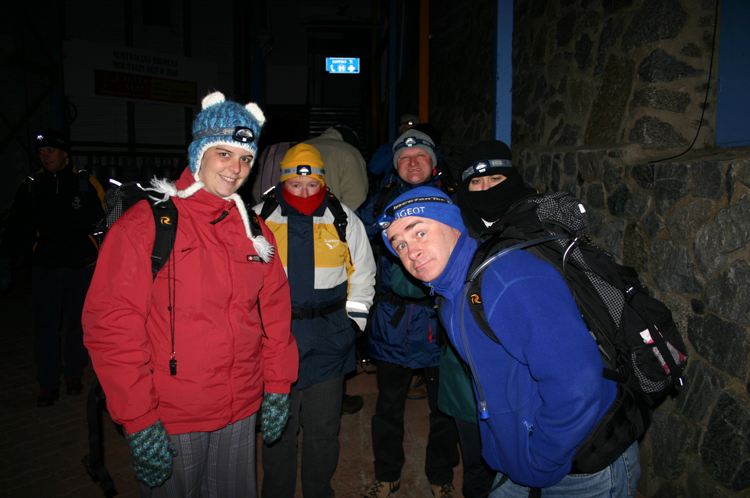
A motley crew
Wrapped now in scarves, and suited against the persistent wind, we emerged onto the path to the summit, headlamps pointing the way along the suspended steel pathway which protects the fragile soil and its botanically interesting ecology from the tramping feet of tourists.
The path has been in existence for many years, and has been religiously repaired when necessary, but although it is a tremendous boon for the plant life in the area, it does pose something of a problem for trekkers. It is cunningly designed from rectangular grids, welded together on steel supports, so that at any time you are walking somewhere between a few centimetres and as much as a metre above the ground. Plants grow freely beneath it, and water falls through it. You are close enough to examine the plant life, but not close enough to damage it, and even though steel is pretty slippery in the wet, the designers added a small serrated edge to each cross piece for traction; all in all it was a tremendous idea.
Sadly, however, the people who installed it managed to weld every grid sideways to its intended orientation. This means that the path is viciously slippery in the direction of travel, and when you inevitably fall, the serrated edges (which now run parallel to your course) neatly dice your hands and knees. On a cold winters night before dawn, the grid is a little slippery. Suitably forewarned by our guide, we walked carefully.
The guide himself was a chatty soul, but he had this obsession with rest stops. Frankly the icy wind was cutting through our clothing, and all we really wanted to do was keep moving, but we kept finding ourselves sitting off to one side of the path on a patch of boulders, nibbling chocolate bars and watching the clouds scudding in front of the moon. Would the sky clear for the sunrise?
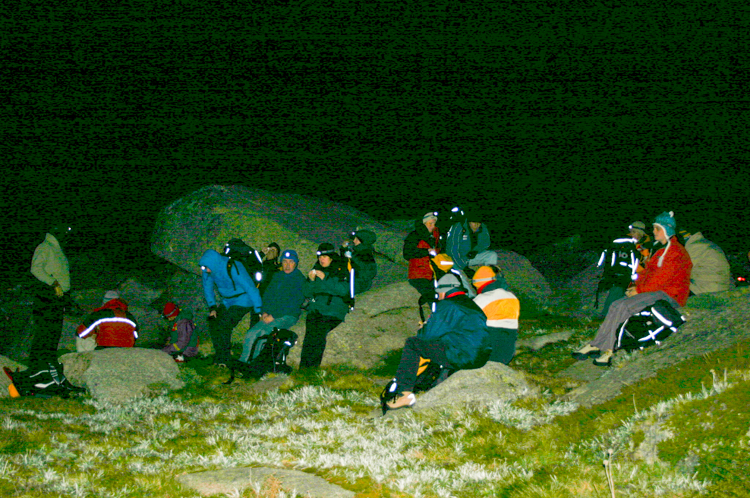
Rest stop with head torches
About an hour and a half later, we were setting a good pace along the slippery path, and the guide made us all slow down. There was plenty of time, he said, and at the moment we were somewhat protected by the sides of the valley. We wouldn’t want to wait too long on the cold summit.
Half an hour later we got to the end of the valley and indeed of the metal path, emerging into the open. The final peak of Mt Kosciuzco rose to our left, a bare rock path spiralling up around it. The guide called another break. Two of the party ignored him and continued up the hill. I wondered vaguely where they were off to. A bit sick of snack bars by now, the rest of us milled around and waited for the guide under the lightening sky… lightening sky! Dawn had come already, and we hadn’t got to the top yet.
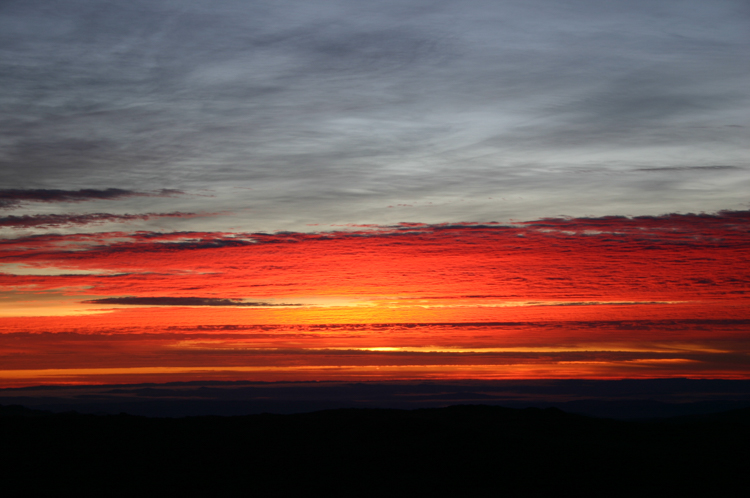
The first tinges of dawn
Cursing the incessant snack breaks, a few of us started running. The spiral path took us around the western side of the mountain, occluding the eastern sky, so for half of the circuit we had no idea whether we would get to the top in time. Then suddenly we emerged on the summit; we’d missed the first few lights of dawn, but thankfully the clouds were still changing second by second, and we huddled under a rock to watch; in that respect the guide had been spot on, the freezing wind was howling over the exposed mountain top.
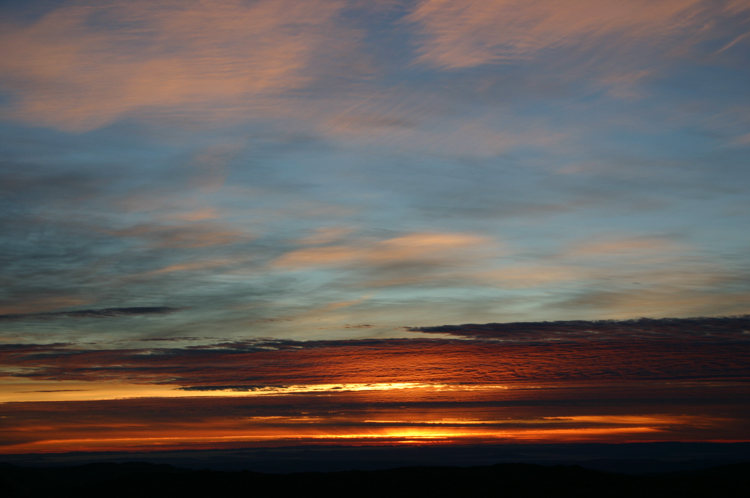
Almost the first light of dawn
The display was well worth it. We huddled together for warmth and sipped Baileys-enlivened hot drinks while admiring the constantly changing cloud colours.
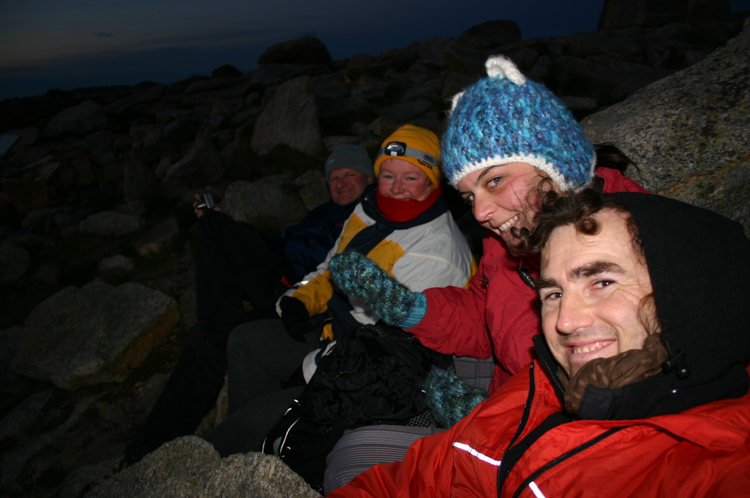
Huddling for warmth
Gradually the sun hauled itself up over the horizon, the sky turned from black to blue, the mist boiling off the plains far below. Behind us, over the back of the mountain, another beautiful vista unfolded. Not to be outdone, the moon shone over the blue-shaded mountains of the Kosciuzco range.
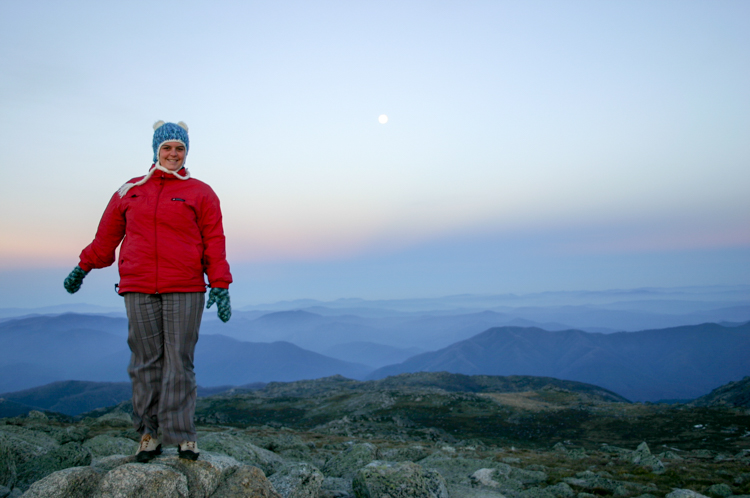
The moon put on a show, too
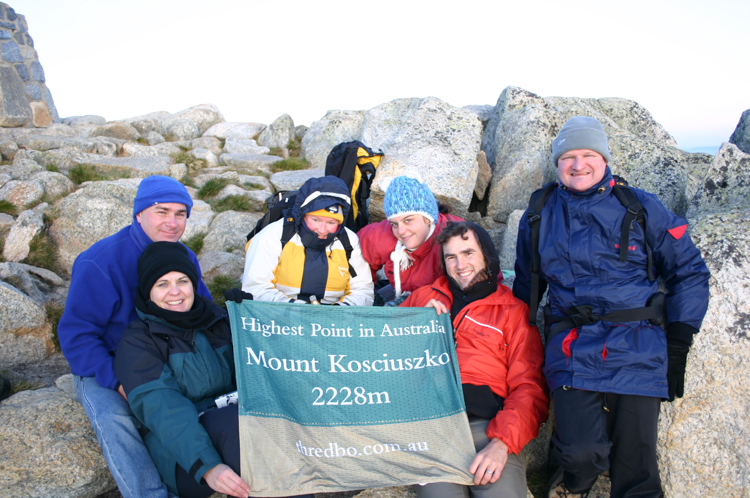
There’s always time for a silly photo